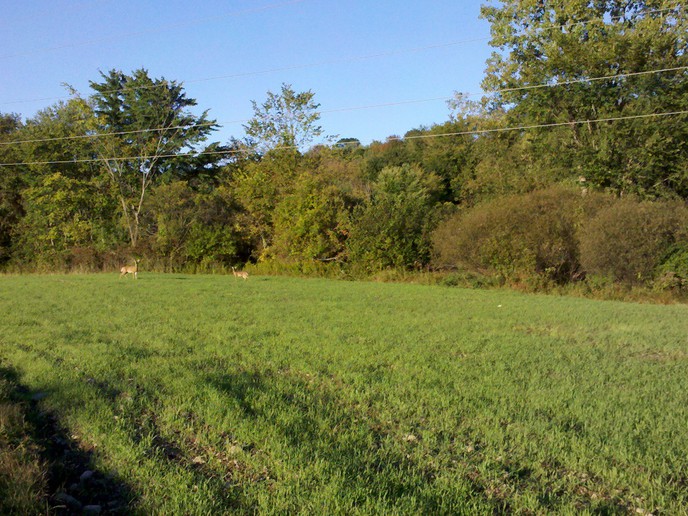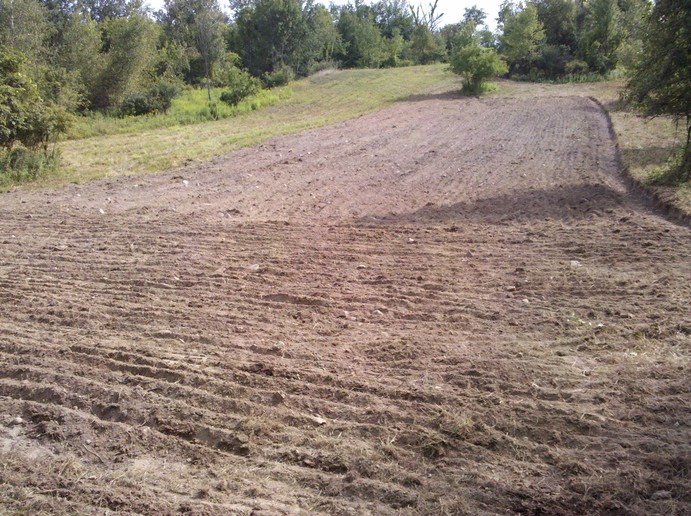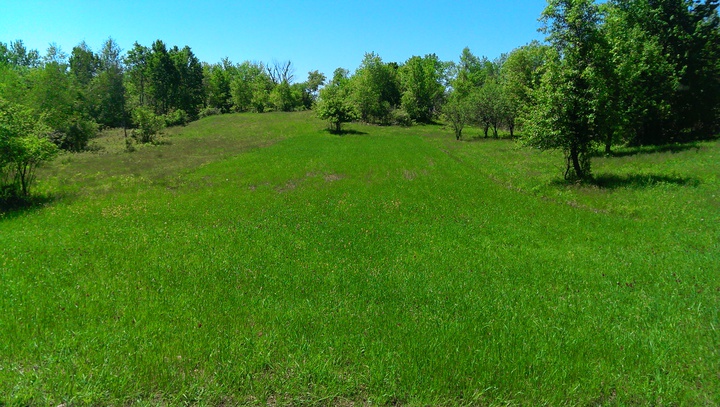Ultradog MN
Well-known Member
- Location
- Twin Cities
After nearly 10 years of plowing and discing then planting a Big Rack Mix of seed the weeds had completely taken over my deer plots. So much that I basically got nothing to attract deer in 2016.
So last spring (2017) I did not plow or plant but in mid June that year - with advice from this board - I did a glyphosphate burn off. That August I disced up the plots very well and broadcast in some rye.
We were blessed with some good rains after that.
In September I was disappointed with the germination rate but by that time of year it's too late to start over. The deer did hit the plots but there wasn't a lot there for them.
In spring of this year the rye really came back in strong. More and thicker than last year. Early too. My tennant up there said as soon as the snow receded the rye was coming up and the deer were hitting it hard. Probably they were happy to get some fresh, early greens after a winter of eating brush.
In August of this year just as the rye ripened and was falling off the stalk I bush hogged it all down and disced it back in.
We got good rain again and boy did it come back strong. I have two good stands of fresh greens for the deer. My wife and I sat in the blind for a while last weekend. It was really interesting to watch the deer eating. We saw 7 deer and it was like they were chowing down big mouthfulls of the stuff and couldn't seem to get enough of it.
I'm assuming it will winter over again and come back next spring.
I don't know what I'll do then but I'm thinking a guy could keep this routine going for several years.
One thing about it is that both plots that were completely covered with weeds in 2016 are essentially weed free now. I guess the rye has dominated and choked out everything else.
So for you other plotters here I think a good, cheap way to get sort of a perennial deer plot - if you bush hog it and disc it back in - is to try some rye in late summer.
By the way, the opener is 5 weeks from yesterday.
So last spring (2017) I did not plow or plant but in mid June that year - with advice from this board - I did a glyphosphate burn off. That August I disced up the plots very well and broadcast in some rye.
We were blessed with some good rains after that.
In September I was disappointed with the germination rate but by that time of year it's too late to start over. The deer did hit the plots but there wasn't a lot there for them.
In spring of this year the rye really came back in strong. More and thicker than last year. Early too. My tennant up there said as soon as the snow receded the rye was coming up and the deer were hitting it hard. Probably they were happy to get some fresh, early greens after a winter of eating brush.
In August of this year just as the rye ripened and was falling off the stalk I bush hogged it all down and disced it back in.
We got good rain again and boy did it come back strong. I have two good stands of fresh greens for the deer. My wife and I sat in the blind for a while last weekend. It was really interesting to watch the deer eating. We saw 7 deer and it was like they were chowing down big mouthfulls of the stuff and couldn't seem to get enough of it.
I'm assuming it will winter over again and come back next spring.
I don't know what I'll do then but I'm thinking a guy could keep this routine going for several years.
One thing about it is that both plots that were completely covered with weeds in 2016 are essentially weed free now. I guess the rye has dominated and choked out everything else.
So for you other plotters here I think a good, cheap way to get sort of a perennial deer plot - if you bush hog it and disc it back in - is to try some rye in late summer.
By the way, the opener is 5 weeks from yesterday.




